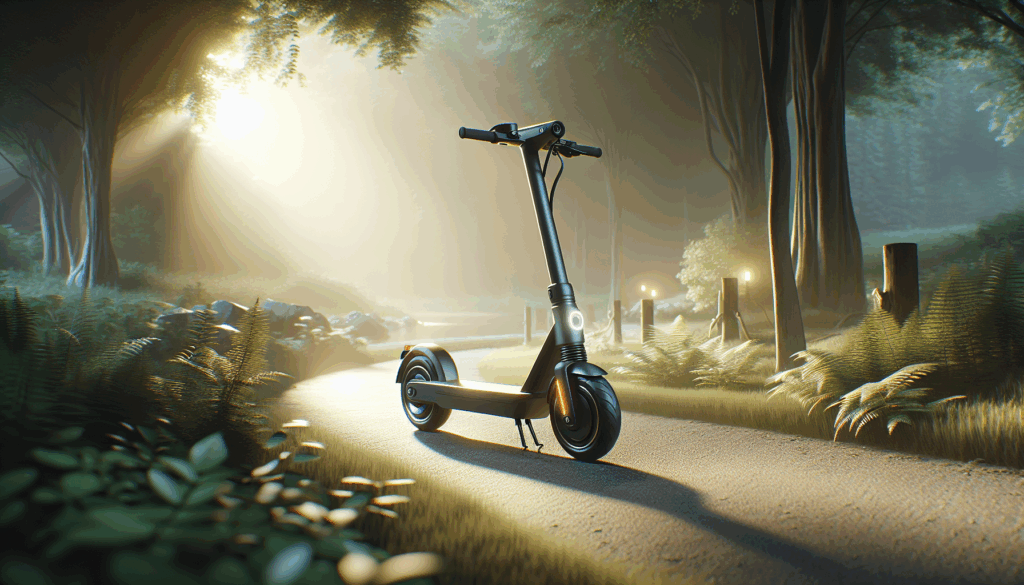Electric scooters have become an iconic part of urban mobility, revolutionizing how people commute across cities. Beyond their sleek design and eco-friendly reputation lies a deeper story one that explains why these futuristic rides often come with a higher price tag. Understanding the economics of e-scooters reveals that their cost reflects quality, innovation, and long-term sustainability rather than simple luxury.

The Cost of Premium Quality
The price of an e-scooter is strongly influenced by its construction quality and the technology behind it. Premium models are not simply assembled from cheap mass-market parts they are meticulously engineered for performance, durability, and rider safety. Manufacturers use aerospace-grade aluminum for the frame, which offers superior strength-to-weight ratio, and high-quality lithium-ion batteries known for longer life cycles and stable energy delivery. Similarly, brushless motors, puncture-resistant tires, and high-torque suspensions are chosen to withstand constant use across diverse terrains. These carefully selected components not only improve performance but also extend the overall lifespan of the vehicle, ensuring long-term value for riders.
In contrast to lower-cost alternatives, top-tier e-scooters undergo strict quality assurance testing before reaching consumers. Each model is tested for stability, battery efficiency, and structural endurance at high speeds or under heavy loads. Manufacturers also fine-tune their power systems to deliver consistent acceleration and smooth braking, optimizing user safety and comfort. The result is an e-scooter that performs reliably, even under challenging urban conditions. Therefore, the higher retail price doesn’t just represent luxury it represents engineering excellence, dependability, and a guarantee that riders are investing in a product built to last.

Technological Innovation and Smart Features
Modern e-scooters are not just a mode of transport they are mobile smart devices designed to enhance efficiency and connectivity. Today’s premium models integrate cutting-edge technologies such as regenerative braking systems, intelligent battery management, and AI-assisted ride optimization. These features allow riders to capture and reuse energy, monitor performance metrics in real time, and even analyze terrain conditions for smoother rides. The development and integration of these technologies require extensive research, software development, and continual updates, which significantly contribute to production and maintenance costs. Beyond convenience, these systems improve energy conservation and reduce the total cost of ownership over time.
Moreover, e-scooter connectivity ecosystems have evolved into highly sophisticated platforms. Many leading brands now offer mobile applications that enable riders to check location data, lock or unlock their scooters remotely, track route histories, and receive firmware updates wirelessly. GPS tracking, theft prevention systems, and cloud-based performance logs make e-scooters intelligent companions rather than just electric vehicles. These smart integrations involve robust hardware components, encrypted data processing, and technical support teams all of which add to the overall price. Ultimately, the technological innovation embedded in e-scooters transforms a traditional commute into a seamless digital experience powered by sustainability and intelligence.
Safety Standards and Regulatory Compliance
Safety and compliance are the backbone of every high-quality e-scooter. Before a scooter is made available to the public, it must meet multiple national and international safety certifications, including mechanical stability, electrical reliability, and fire resistance tests. This rigorous process requires manufacturers to collaborate with certified laboratories and testing agencies, which can be costly. High-end e-scooters often include redundant braking systems, high-visibility lighting, and waterproof housings to withstand varying weather conditions. These upgrades not only meet regulatory standards but also ensure user protection, reducing the likelihood of accidents and malfunctions during daily use.

Additionally, the production of compliant e-scooters involves careful selection of materials and electronic components that adhere to global transport regulations. For example, battery casings must be insulated against thermal runaway, and braking mechanisms must pass endurance tests for repeated use. Manufacturers also integrate fail-safe technologies that automatically cut power during faults or collisions. Such features reassure consumers that their scooter is not just a product but a safety-certified machine built for real-world challenges. In essence, a higher cost guarantees peace of mind the assurance that each e-scooter has been thoroughly vetted to protect both the rider and the environment it operates in.
The Role of Sustainability in Value
E-scooters are reshaping how cities approach sustainable mobility. Each ride contributes to reducing urban congestion and greenhouse gas emissions, providing a cleaner alternative to cars or motorcycles. However, this eco-friendly impact stems from the industry’s commitment to sustainable manufacturing practices. Many e-scooter companies invest in recyclable materials, modular battery systems, and energy-efficient assembly lines to minimize waste and carbon footprint. This responsible production model adds to the cost but ensures that every scooter purchased supports a more sustainable future. The long-term vision focuses not just on affordability but also on ecological accountability, making these scooters an ethical choice for environmentally aware consumers.
Beyond manufacturing, sustainability extends into the operational and usage phases of e-scooters. Riders save significantly on fuel costs, and the maintenance requirements are minimal compared to combustion-based vehicles. Many models are designed for easy part replacement, which reduces electronic waste and prolongs usability. Some brands also introduce battery recycling programs and collaborations with renewable energy providers. These sustainable initiatives reinforce the long-term economic value of e-scooters they are not just vehicles but investments in a greener planet. The slightly higher price tag ultimately reflects a balance between premium performance and a positive environmental impact.

Unveiling the Real Value Proposition
The true value of an e-scooter goes beyond its initial purchase cost. When evaluated over time, these vehicles prove to be cost-effective and sustainable investments. Unlike cars or motorcycles that require regular servicing, oil changes, or fuel expenses, e-scooters demand minimal upkeep. Their electric drivetrains have fewer moving parts, leading to reduced wear and lower maintenance fees. Moreover, with the rising cost of fuel and parking fees in urban environments, e-scooters provide a practical, budget-friendly commuting option. This affordability over the vehicle’s lifespan makes the initial investment worthwhile, especially when combined with the environmental benefits.
In addition to economic savings, e-scooters embody convenience and adaptability. Their compact design allows easy storage in small living spaces, and their portability ensures riders can seamlessly transition between public transport and personal travel. Many commuters have already replaced short car trips with e-scooters, leading to time savings, reduced stress, and enhanced mobility freedom. Collectively, these advantages establish a powerful value proposition: an e-scooter is not merely an expensive gadget but a lifestyle investment that blends innovation, comfort, and sustainability into one forward-thinking mobility solution.
Conclusion: The Smart Investment in Modern Mobility
The economic framework behind e-scooters reflects a synthesis of advanced engineering, environmental responsibility, and technological evolution. Although the upfront cost may seem steep, the overall value far outweighs the price. As innovation accelerates, production costs will eventually decrease, making premium models more accessible to consumers worldwide. For now, understanding the intricate factors driving e-scooter pricing allows riders to make informed decisions rooted in performance, safety, and sustainability. These electric vehicles represent far more than convenience they are symbols of progress, reflecting how innovation and eco-consciousness can coexist to redefine the future of urban mobility.
